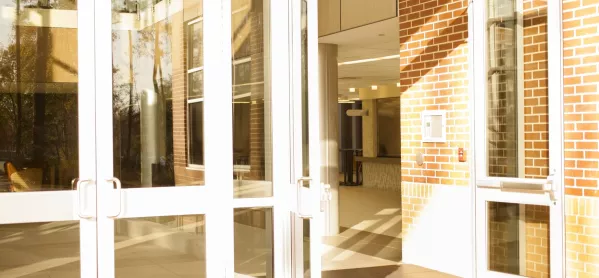- Home
- News
- Specialist Sector
- Special schools and AP settings: Government guidance
Special schools and AP settings: Government guidance

The government issued new guidance for special schools, special post-16 institutions and alternative provision settings on Monday evening ahead of full reopenings on 8 March.
Much of the guidance remains the same as from previous reopenings but there are some new stipulations added for the new full reopening period.
We run through some of the key new elements here:
Who is it for?
- Special schools, including non-maintained special schools.
- Special post-16 institutions (SPIs).
- Alternative provision (including hospital schools).
1. Attendance
A key point repeated regularly in the guidance is that attendance is now mandatory from 8 March for pupils in all settings and that the usual level of schooling should ideally be provided.
However, the guidance does acknowledge that if settings are short staffed owing to isolation or shielding, it may be the case that alternative arrangements are made.
“You may need to alter the way in which you deploy your staff and use existing teaching and support staff more flexibly,” it states.
“If, having pursued all the immediate options available, you still have concerns about staffing capacity, you should talk to your local authority or academy trust point of contact.”
For pupils on education, health and care plans, settings are also urged to continue all therapies and support that would normally be in place for children and young people as usual.
However, again it outlines that, if unable to do this, schools should collaborate “with local authorities and health partners (where applicable)”, and families, to “co-produce alternative arrangements for delivering provision” and based on the specific needs of each pupil - not adopt a “one size fits all” approach.
For pupils that have often been absent even prior to the pandemic and need more intervention to attend, catch-up funding can be used to help.
“To support families who will need additional help to secure pupils’ regular attendance, you can use the additional catch-up funding that has been provided, as well as existing pastoral and support services, attendance staff and pupil premium funding”.
2. Remote education
Any pupil unable to attend in-school education owing to being clinically extremely vulnerable (CEV) must be provided with remote teaching, the guidance says. “You are required to provide remote education to pupils who are unable to attend school on-site because they are [shielding].”
Schools and their staff are given the discretion to consider how to do this best and recognise that it may require specialist plans created with the support of families.
“For pupils and students with SEND (special educational needs and disability), and those in alternative provision settings, their teachers are best placed to know how their needs can be most effectively met to ensure they continue to make progress if they are not in face-to-face education,” the guidance states.
“We recognise that some pupils and students with SEND may not be able to access remote education without adult support and so expect you to work with families to deliver an ambitious curriculum appropriate for their level of need.”
3. Staff
CEV staff are advised not to attend the workplace as part of ongoing guidance from the government and should, ideally, be provided options to work from home in line with wider school guidance.
Clinically vulnerable (CV) staff can continue to work in school or college where it is not possible to work from home, though.
Additionally, staff that work in specialist settings, including “specialists, therapists, clinicians and other support staff for pupils with SEND” can continue to provide interventions as usual, “including where this requires them to move between settings”.
4. Testing of pupils
With testing a key plank of the 8 March return to full schools, all settings are to help identify contagious students not showing any symptoms of Covid-19.
For alternative provision settings and special schools, the guidance acknowledges that administrating tests on-site or at home may be more challenging and that “greater flexibility” may be required to achieve this.
“There will be a range of children and young people in these settings, and different approaches to testing will be needed. We have given specialist settings flexibility to be able to work with pupils/students and their families to agree the most appropriate way of them participating in twice-weekly testing.”
The guidance also outlines that “testing remains voluntary” and that tests on pupils should not be carried out until “informed consent has been given by the appropriate person and the child, and young person is willing to be tested”.
The guidance also notes that schools should use “code Y for secondary age pupils not attending school for lessons during this week due to the asymptomatic testing programme”.
The guidance says more information on what to include in pupil attendance records in end-of-year reports will be issued soon.
Dan Worth is senior editor at Tes
You need a Tes subscription to read this article
Subscribe now to read this article and get other subscriber-only content:
- Unlimited access to all Tes magazine content
- Exclusive subscriber-only stories
- Award-winning email newsletters
Already a subscriber? Log in
You need a subscription to read this article
Subscribe now to read this article and get other subscriber-only content, including:
- Unlimited access to all Tes magazine content
- Exclusive subscriber-only stories
- Award-winning email newsletters
topics in this article



